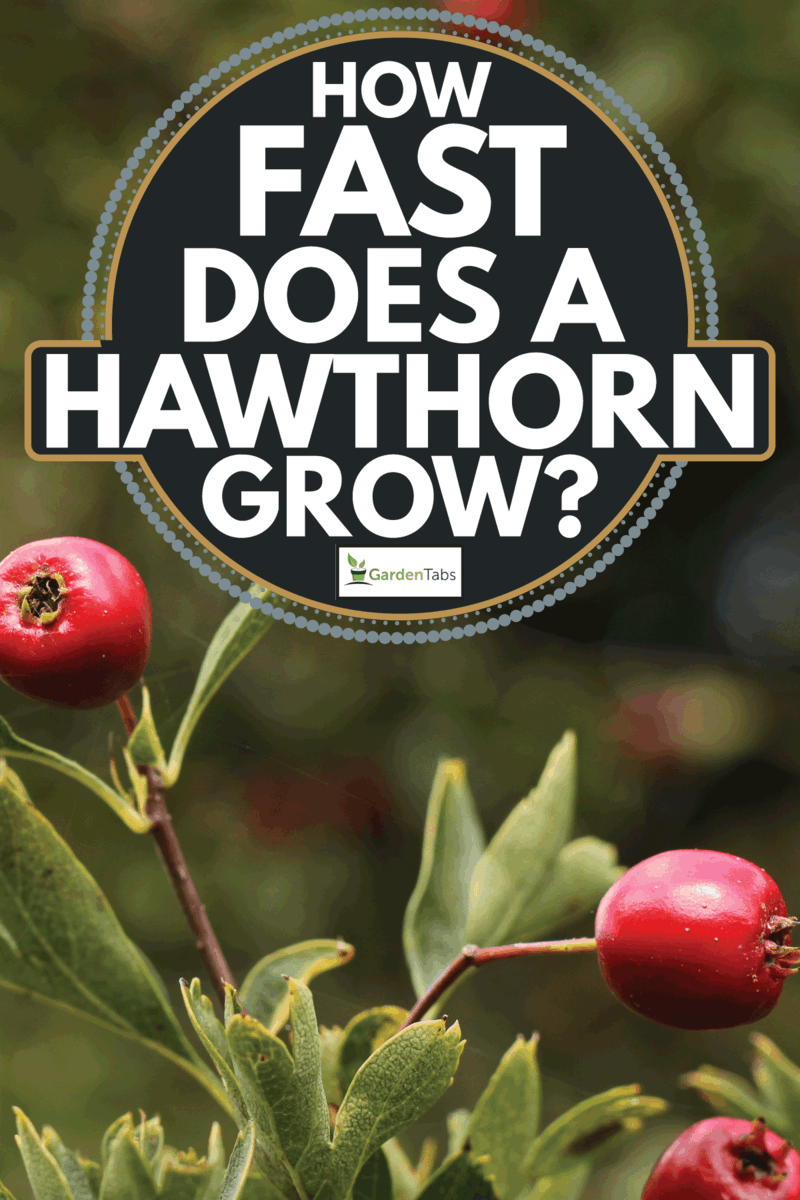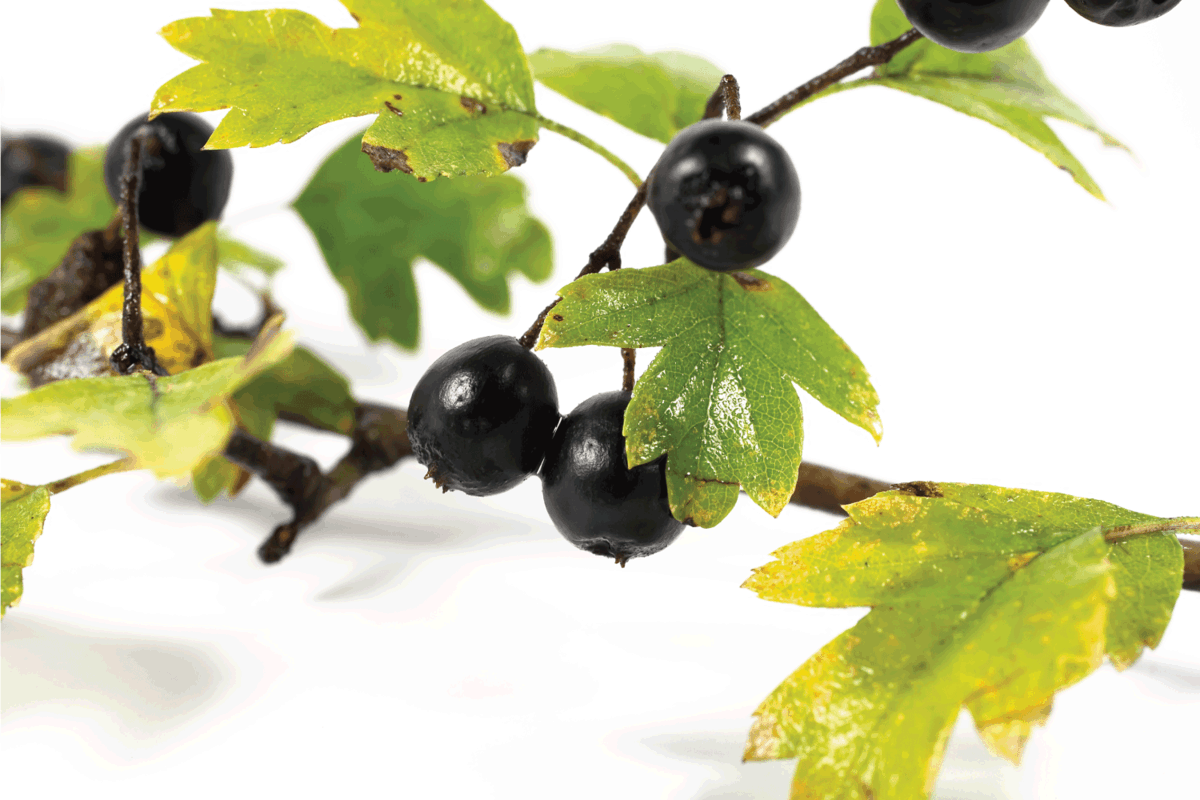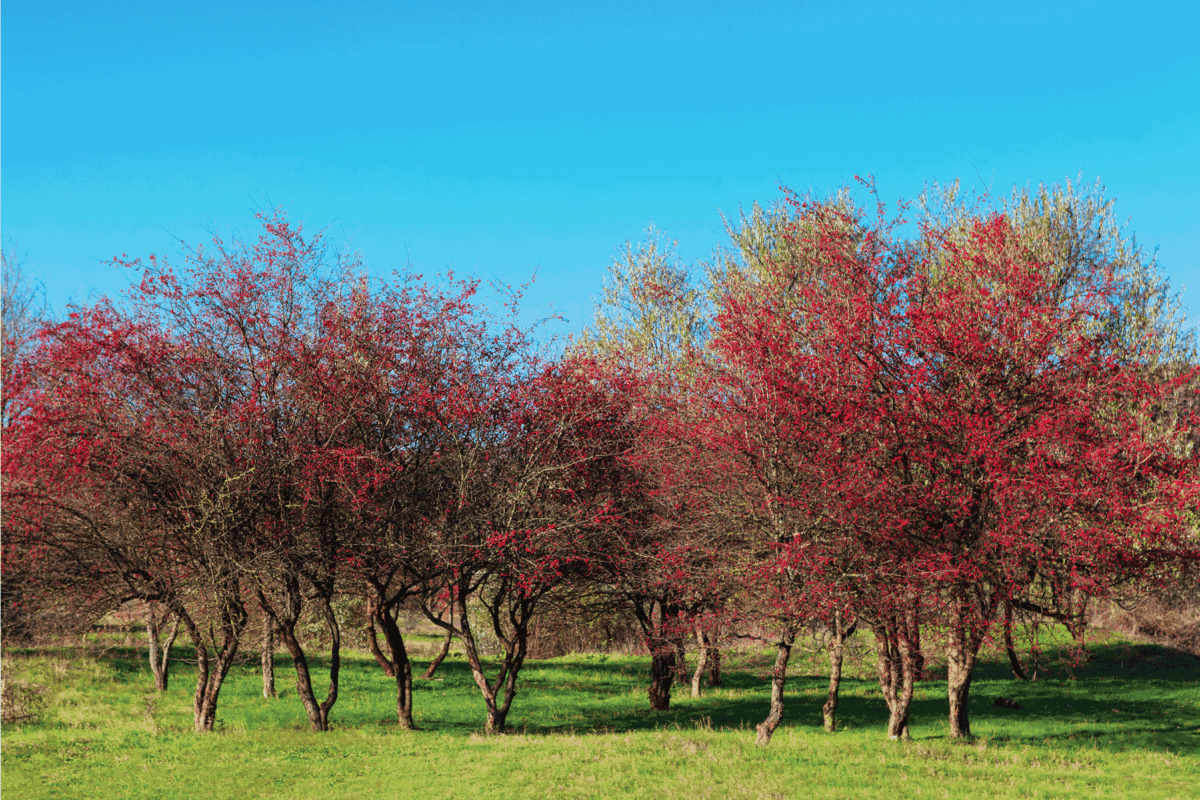Hawthorn trees and shrubs are wonderful additions to most landscapes and gardens. Not only are these trees durable and winter hardy, but they also produce beautiful flower blooms in the spring and bright berries in the winter. This makes hawthorns the ideal garden accent to add color to your yard or garden year-round. But just how fast do these trees grow? We've done the work to bring you the answer.
The common hawthorn grows at a medium rate of 12 inches to 24 inches per year. They will reach an average height of 25 feet.
Whether you want a thick shrub for a hedge line or a shade tree for your yard, there are many different varieties of hawthorns to fit your gardening needs. Continue reading to help you decide on the best hawthorn for your landscape as well as learning other important hawthorn facts.

Identifying A Hawthorn
Hawthorns are known for their thick, broad canopies, often growing as wide as they are tall. As a medium to fast-growing plant, hawthorns won't take long to reach their full height.
Several factors will help to determine if a tree or shrub is part of the hawthorn family. Despite the size and bark differences, most hawthorns will have flower blooms followed by berry blooms. Hawthorn flowers are often white or pinkish and bloom in late spring. Their berries are red and grow in late fall and through winter, providing food for birds and other wildlife.
Hawthorn trees are generally two shapes—pyramid-shaped, being very broad on the bottom and narrowing at the top, or round, being fuller around the middle of the canopy.
The major identifying factor of hawthorn is its sharp thorny branches. These can be a pain in the younger years of a hawthorn but will become easier to see and avoid over time.
Does hawthorn grow quickly?

In general, hawthorn does grow more quickly than other trees and shrubs. This means that the hawthorn will reach its full height quickly, making it easier to maintain as a mature tree.
Still, there are hundreds of species of hawthorn trees and shrubs, but they don't all grow at the same rate. Hawthorn shrubs grow at a fast pace of 15-25 inches per year. Trees, however, grow at a medium pace of 12-24 inches per year.
The growth rate of a hawthorn will be dependent on its environment, especially in its early years of life. Hawthorns grow best in well-irrigated soil with high moisture and full sun. Once a hawthorn has matured, it requires little to no maintenance to keep up with its growth.
How big does a hawthorn tree grow?
Common hawthorn trees will reach 25-30 feet tall and roughly 25 feet wide. Their broad and full canopies are what take up the most amount of space compared to their shorter trunks.
There are hawthorns that can grow up to 45 feet. Sometimes this can be a rogue branch growing upward, as hawthorns can have alternating branch patterns that can appear a bit chaotic at times. For this reason, small trimmings are safe for trees and shrubs.
Is there a dwarf hawthorn tree?

The Western Thornapple is a smaller hawthorn tree growing from 3-13 feet tall. This hawthorn contains much of the same characteristics as other hawthorn trees apart from the size. They have long thorns and clustered flowers that bloom in late spring. The Western Thornapple is also known as the Black Hawthorn because its berries are black when they are ripe.
The Indian hawthorn is a smaller shrub, only reaching around 6 feet tall. Creating hedge lines with an Indian hawthorn will give you privacy, as it's tall enough to act as a screen, and its branches and leaves are full. Indian hawthorns also have beautiful pink blooms, making them a wonderful addition to your garden or landscape.
What is the best hawthorn tree?
With hundreds of different hawthorn trees and shrubs, it can be difficult to decide on the best option for your yard. A great trait about hawthorns is their hardy ability to endure a freeze and their berries that appear in the fall and winter to attract wildlife and bring color to a winter landscape.
Whether you're looking for a visually appealing hawthorn or one that will create shade or privacy, you have a lot of options.
Autumn Glory Hawthorn

Autumn Glory Hawthorn trees are known for their bright orange leaves in the fall. Like most hawthorns, this tree has white flowers in the spring and red pomme fruit in the fall and winter.
These hawthorns can reach 15 feet tall and wide. If you have landscaping that contains early blooming trees, like dogwoods, Aumtum Glory's later blooms can add color to the summer and fall to your landscape.
Washington Hawthorn
Washington hawthorn is the perfect accent tree for a garden. This hawthorn can grow up to 25 feet, with a branching pattern more closely resembling a tree, taking on a round shape as opposed to the wider and more broad canopy of other hawthorns.
The Washington hawthorn attracts bees and other wildlife. It has showy white flowers that bloom in spring, with clusters of red berries in fall and winter, making this a year-round accent.
Winter King Hawthorn
Winter King hawthorn is best for creating shade or acting as a screen in your landscaping. It grows from 20-30 feet tall and wide with a dense canopy. This hawthorn is gorgeous all year round, with bright green leaves that range from purple to red in the fall, beautiful white flowers that bloom in spring, and larger orange or red berries that last through winter.
A distinctive trait of the Winter King hawthorn is its bark. The silver-gray bark peels off in sections over time, exposing a bright orange trunk below. This provides another visually appealing element in winter.
In Closing
Hawthorn trees and shrubs are great additions to your yard. From their pretty blooms and unique bark to their need for little to no care, these trees will easily fit and adapt where you plant them.
Interested in knowing more about hawthorn trees and how to care for them? Check out these posts to learn how to properly incorporate these trees and shrubs into your landscape:
